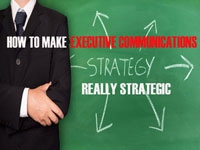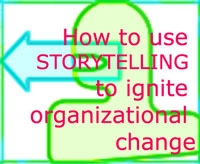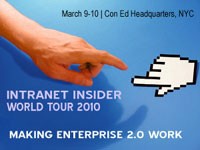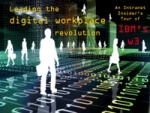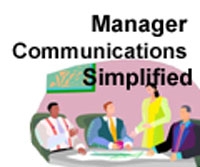Potentially, executive communications is the most powerful PR tool your organization has. In reality, lots of effort is wasted and you’re hard-pressed to figure out what the bottom-line results your C-suite communications’ activities are yielding. Fret about this no more. We’ve assembled the world’s three leading experts on how to create a disciplined executive communication program. Moderated by Vital Speeches of the Day editor David Murray, this all-star panel includes the founder, the manager, and the chief evangelist of the original strategic executive comms program.
You Will Learn:
- How to match executives with messages and messages with audiences: matrices and message-mapping.
- How to evaluate speaking and interview opportunities so you take only the ones truly worthy of your executives’ time.
- How to get executives on board and keep them on board by showing them real results.
- How to use social media to magnify the power of your program.
- How to introduce strategic executive communications to organizations that have been running the function ad hoc.
Who Should Attend
- C-level and senior executives from Fortune 1000, mid- and small-sized companies
- Speechwriters and Executive Communication Managers
- Directors of corporate communications, PR, marketing, community relations, public affairs, finance and HR
- Executive directors, leaders and managers of non-profits, NGOs, churches, educational institutions and philanthropic foundations
- Leaders of federal, state, county and municipal government departments and agencies
- Members of the national media including bloggers
Presented by:
 Steve Soltis directs the Leadership Communications function at The Coca-Cola Company. In this role he is responsible for executive communication and positioning for the company’s chairman and CEO and is also the architect of the company’s senior executive speakers bureau. Soltis joined Coca-Cola in September of 2006, after spending 10 years directing executive communications for UPS, and two years as a speechwriter for MCI. Prior to his corporate communications career, Soltis worked in a variety of editorial positions for The Global Network, Harte Hanks, Ackerley Communications and the Metropolitan Washington Airports Authority. In 2006, Soltis was a recipient of the PRSA Silver Anvil Award for B2B Marketing for the work he led in developing UPS’s global customer conference, Longitudes. A graduate of the University of North Texas and Mary Washington College, Soltis also serves on the Advisory Board of the College of Science and Technology at Georgia Southern University. He is the author of two travel guide books and lives in suburban Atlanta with his wife, Stacy, and two children, Annie and Christopher.
Steve Soltis directs the Leadership Communications function at The Coca-Cola Company. In this role he is responsible for executive communication and positioning for the company’s chairman and CEO and is also the architect of the company’s senior executive speakers bureau. Soltis joined Coca-Cola in September of 2006, after spending 10 years directing executive communications for UPS, and two years as a speechwriter for MCI. Prior to his corporate communications career, Soltis worked in a variety of editorial positions for The Global Network, Harte Hanks, Ackerley Communications and the Metropolitan Washington Airports Authority. In 2006, Soltis was a recipient of the PRSA Silver Anvil Award for B2B Marketing for the work he led in developing UPS’s global customer conference, Longitudes. A graduate of the University of North Texas and Mary Washington College, Soltis also serves on the Advisory Board of the College of Science and Technology at Georgia Southern University. He is the author of two travel guide books and lives in suburban Atlanta with his wife, Stacy, and two children, Annie and Christopher.
 Bruce Danielson is a thought leadership consultant who designs and implements strategic communications programs to help companies achieve their next level of growth. He recently completed an 11-year career as Executive Communications Manager at UPS, where he was responsible for message platform development, forum placement, speech writing and message repackaging to support the company’s senior executive communications strategy. Prior to joining UPS, he served as a speechwriter and event manager at MCI. Danielson began his corporate communications career at Harland, serving as Director of Corporate Communications. Away from the world of thought leadership, Bruce plays old-time fiddle and is an avid whitewater canoeist and hiker. He lives in Atlanta with his musical wife.
Bruce Danielson is a thought leadership consultant who designs and implements strategic communications programs to help companies achieve their next level of growth. He recently completed an 11-year career as Executive Communications Manager at UPS, where he was responsible for message platform development, forum placement, speech writing and message repackaging to support the company’s senior executive communications strategy. Prior to joining UPS, he served as a speechwriter and event manager at MCI. Danielson began his corporate communications career at Harland, serving as Director of Corporate Communications. Away from the world of thought leadership, Bruce plays old-time fiddle and is an avid whitewater canoeist and hiker. He lives in Atlanta with his musical wife.
 David Murray writes and speaks about communication—business, political and personal. He’s editor of Vital Speeches of the Day, a monthly collection of the best speeches in the world. He writes about sports, people, politics and travel for magazines, newspapers and websites. publications and websites. And he discusses the communication life at his popular personal blog, Writing Boots.
David Murray writes and speaks about communication—business, political and personal. He’s editor of Vital Speeches of the Day, a monthly collection of the best speeches in the world. He writes about sports, people, politics and travel for magazines, newspapers and websites. publications and websites. And he discusses the communication life at his popular personal blog, Writing Boots.
Intranets used to be about three things: storing and sharing files, self-service forms and processes and communicating company news.
Today they’re still about those things, but much more … like connection, collaboration and interactive communication. No longer the silent majority, employees are using internal social media tools to easily connect, share ideas, debate, complain, advise and work together like never before. The original promise of intranets is beginning to be realized, but the perils are also real and threatening. The trick is to let the inmates run the asylum, but keep the conversations responsible and focused on the mission and strategic direction.
No matter where you are on the social intranet continuum, you’ll benefit from spending an hour with William Amurgis. You’ll learn how to manage the new social intranet that is nothing like your father’s intranet.
What You Will Learn:
- The big promise and serious pitfalls of socializing your intranet
- Simple, zero-budget steps to a more social intranet
- Simple and fun ways to lead your organization to be more open to social
- How to respond to misbehavior and misuse of time
- Should you buy or build your internal social media platform
- How to state the business case for social
Presented by:
 William Amurgis is former director of internal communications at American Electric Power, based in Columbus, Ohio. The company’s intranet was recognized as one of the 10 best in the world by the Nielsen Norman Group in 2007, and its Ideas system received an Intranet Innovation Award in 2009. Amurgis has a Bachelor of Science degree in Statistics, and a Master of Arts degree in Education, both from Ohio State University.
William Amurgis is former director of internal communications at American Electric Power, based in Columbus, Ohio. The company’s intranet was recognized as one of the 10 best in the world by the Nielsen Norman Group in 2007, and its Ideas system received an Intranet Innovation Award in 2009. Amurgis has a Bachelor of Science degree in Statistics, and a Master of Arts degree in Education, both from Ohio State University.
 Niki Burke is a business consultant supporting the internal social network and collaboration tools at Nationwide Insurance. Niki also produces an internal radio show to teach users how to use Nationwide’s collaboration tools. She earned a degree in social computing infomatics from the University of Michigan and has been with Nationwide about two years.
Niki Burke is a business consultant supporting the internal social network and collaboration tools at Nationwide Insurance. Niki also produces an internal radio show to teach users how to use Nationwide’s collaboration tools. She earned a degree in social computing infomatics from the University of Michigan and has been with Nationwide about two years.
 Get instant access to this webinar replay. Or Subscribe to ASK and access all replays (best value).
Get instant access to this webinar replay. Or Subscribe to ASK and access all replays (best value).
Whether explicit or not, all corporate communication has an underlying goal of persuading an audience to do something, i.e., like you, trust you, embrace a scary change, buy your product or service, etc.
Even if you buy this logic, you probably aren’t yet persuaded that you need to purchase this webinar on moving an audience to action. Why? Because facts and data alone do not convince audiences; they have to desire to act. That’s where rhetoric, the study of understanding, discovering and developing arguments for particular situations, comes in. It behooves all of us in business, especially those in corporate communications, to know and use the essential time-tested secrets for changing an audience’s mood, mind and willingness to act.
Don’t miss this chance to learn from rhetoric expert and author of Thank You For Arguing, Jay Heinrichs, who has been described as a cross between Cicero and David Letterman. During this pithy and entertaining webinar, Jay will teach us the most practical tips and tools to master the art of persuasion, whether when speaking or writing, using sources as diverse as Aristotle, Lincoln and Homer Simpson. Whether you work in marketing, sales, public relations, internal communications or executive leadership, this webinar is for you. Are you persuaded yet?
“The Pivot concept was the best idea. Thanks for putting these together – you offer a valuable product at affordable prices.”
What You Will Learn:
- First, the 3-step strategy for getting the audience the mood and moving it toward action
- Ethos, pathos or logos … which persuades best, when?
- What’s the best medium for your message?
- A simple strategy to get an argument unstuck
- Aristotle’s three traits of credible leadership
- A “tool kit” of rhetorical tactics, from the Pivot to the Reluctant Conclusion
Who Should Attend
This webinar is designed for everyone who would like to win audiences and move them to action by understanding the power of rhetoric. It is especially suitable for:
- Corporate communicators, marketers, adverting execs, HR, sales, writers and editors, teachers, students and politicians.
Presented by:

Proving the value of public relations continues to be one of the profession’s most vexing challenges. Mark Weiner, CEO of PRIME Research in North America, and John Gilfeather, President of the Marketing Research Council, share their experiences in helping some of the world’s most admired companies and brands, including Procter & Gamble, ATT, GE and more. In addition, the two provide the tools you can use now to demonstrate and generate a positive return on your PR.
What You Will Learn:
- Three keys to optimizing objectives-setting
- How to conduct an “Executive Audit,” a proven approach to uncovering the often secret PR value system within your own organization
- How to establish credible measurement systems for reputation and other key outcomes
- The three established criteria for generating a positive return on your investment in PR with case studies from GE, Miller Brewing and TXU
Additional questions that will be answered:
- What is a reasonable budget to conduct a credible measurement program?
- What is the risk-free approach to setting objectives?
- How do I minimize the risk of evaluating our PR?
- What can I do now to begin generating a positive return on investment?
Presented by:
 Mark Weiner is the CEO of PRIME Research in North America. PRIME Research is one of the world’s largest public relations and corporate communications research and consulting providers with offices in Western Europe, North and South America, Eastern Europe and the Far East. Since 1993, Mark has devoted his career to helping many of the world’s most respected organizations and brands to demonstrate and generate a positive return on their investment in corporate and brand communications. He is the author of “Unleashing the Power of PR: A Contrarian’s Guide to Marketing and Communication” published by John Wiley & Sons.
Mark Weiner is the CEO of PRIME Research in North America. PRIME Research is one of the world’s largest public relations and corporate communications research and consulting providers with offices in Western Europe, North and South America, Eastern Europe and the Far East. Since 1993, Mark has devoted his career to helping many of the world’s most respected organizations and brands to demonstrate and generate a positive return on their investment in corporate and brand communications. He is the author of “Unleashing the Power of PR: A Contrarian’s Guide to Marketing and Communication” published by John Wiley & Sons.
Prior to PRIME, Mark Weiner was the Global Director and Senior Vice President of Ketchum Research where he led an international team of analysts. Prior to joining Ketchum, Weiner was the CEO and president of Delahaye, a global public relations research and consulting firm.
Weiner is a member of the PRSA, IABC and the Institute for Public Relations for whom he served as Trustee and Chairman of the Research and Measurement Commission. He is an editorial advisory board member of PRSA’s Strategist and PR News. A frequent provider of provocative public relations content, Weiner is a recurring conference speaker at international and domestic events, and a prolific author, having published more than one hundred articles.
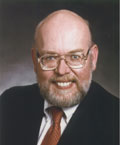 John Gilfeather is an expert in corporate reputation measurement, public affairs research and B2B marketing. He was Managing Partner at Yankelovich and was responsible for all the custom research of the firm. After 30 years at Yankelovich, he joined Roper Starch Worldwide where he was Vice Chairman and head of Roper Public Affairs and Media. For the past 2+ years, he was Executive Vice President in charge of Stakeholder Management research for TNS in the North America.
John Gilfeather is an expert in corporate reputation measurement, public affairs research and B2B marketing. He was Managing Partner at Yankelovich and was responsible for all the custom research of the firm. After 30 years at Yankelovich, he joined Roper Starch Worldwide where he was Vice Chairman and head of Roper Public Affairs and Media. For the past 2+ years, he was Executive Vice President in charge of Stakeholder Management research for TNS in the North America.
Mr. Gilfeather conducted groundbreaking research in corporate reputation for Time Magazine on the 1970s, for Brouillard Communications in the 1980’s and for Fortune Magazine in the 1990s. In the current decade, he created the Roper Corporate Reputation Scorecard and the TNS Corporate Social Responsibility Report Card. He is a frequent speaker on reputation matters for the PR Leadership Forum, the CCI Leaders Forum, PR News seminars, the Fortune Corporate Marketing Forum and the Fortune Global Marketing Forum.
Mr. Gilfeather is a Past Chair of the Council of American Survey Research Organizations (CASRO) and served on it Board for nine years. He is a founding member of the Institute for Public Relations’ Commission on Measurement and Evaluation. Currently, he is President of the Marketing Research Council.
Social Media is replacing the 24 hour news cycle with the 140 character (Twitter) news cycle. Every crisis communications plan is now riddled with fatal flaws and due for a major rewrite.
- Secrets to speed in crisis communications
- Fatal flaws in most crisis communications plans
- Implications of Social Media, friend and foe
- Communications conundrums of Social Media
 Gerard Braud (Jared Bro) has pioneered new ways to speed you through both crisis communications and the process of writing a crisis communications plan. Since 1994, Gerard has practiced his craft on four continents as an expert in crisis communications and media training. Prior to 1994, Gerard spend 15 years as an award winning frontline journalist with report seen around the world on NBC, CBS, CNN and the BBC.
Gerard Braud (Jared Bro) has pioneered new ways to speed you through both crisis communications and the process of writing a crisis communications plan. Since 1994, Gerard has practiced his craft on four continents as an expert in crisis communications and media training. Prior to 1994, Gerard spend 15 years as an award winning frontline journalist with report seen around the world on NBC, CBS, CNN and the BBC.
Who Should Purchase
- Individuals responsible for corporate communications, public relations, corporate affairs, human resources, employee communications, media relations, and issues management.
Testimonials:
- “It has been awhile since I’ve left a seminar (webinar, teleseminar, in-person, etc.) feeling, ‘Wow, I’m walking away with some new nuggets of insight I can put in place to help me up my game – and impact my clients in a positive way.’ So kudos to Gerard Braud for a great teleseminar on ‘Writing Your Crisis Comm Plan for the New Social Media Reality‘ and bringing to bear new ways of tackling an age-old bastion of public relations – the Crisis Communication Plan.” Jessica Flynn, Principal, Red Sky Public Relations in PR Musings Weblog.
- “Timely information, clear presentation, nice slides.”
- “We want to pilot the use of social media in our crisis planning process and this was good information to have.”
Brand champions are internal and external story tellers who spread the brand vision, brand values and cultivate the brand in an organization. Every organization needs committed and passionate brand champions. Be it your employees, investors, customers, or other key influencers, true advocates for your brand affect the corporate bottom-line and are critical to maintaining strong brand equity.
What You Will Learn:
- Why does branding matter, and how does it translate to profitability?
- What are the world’s most powerful brands, and what are they doing consistently right
- Does your brand really speak to all stakeholders? How is stakeholder value measured and valued?
- What are the best practices for building powerful brands?
What Do Your Customers Think About Your Company? (And Are They Right?)
A company’s image is perhaps its most powerful marketing asset. On the cutting edge of corporate strategy, image is essential for positioning a company for maximum growth. When finely honed and used correctly, corporate “image” can influence consumer choices, build brands, pre-sell products and services, and add value to a company in the minds of its public.
Case studies and best-practice examples: Jim Gregory, noted brand expert, will moderate this discussion and delve into Dell Computer and JetBlue Airways corporate case studies that will look at different stakeholders and how they can positively affect your brand.
Presented by:
 Jim Gregory is founder and CEO of CoreBrand, a global brand strategy and communications firm based in Stamford, Connecticut with offices in New York, New York and Tokyo, Japan.
Jim Gregory is founder and CEO of CoreBrand, a global brand strategy and communications firm based in Stamford, Connecticut with offices in New York, New York and Tokyo, Japan.
With 30 years of experience in advertising and branding, Jim is a leading expert on brand management and credited with developing pioneering and innovative tools for measuring the power of brands and their impact on a corporation’s financial performance.
Among the tools Jim has developed is the Corporate Branding Index® (CBI) – a research vehicle that has continuously tracked the reputation and financial performance of over 1200 publicly traded companies in 47 industries since 1990. CoreBrand uses the CBI to help clients understand how their brand compares with industry peers and determine how communications can impact corporate reputation and financial performance – including stock price and revenue growth.
Jim is a brand council member for both Bristol-Myers Squibb and New York Stock Exchange. He is a frequent speaker on the financial benefits of advertising and brand management for The Wall Street Journal as well as BusinessWeek.
Jim has written four books on creating value with brands, Marketing Corporate Image, Leveraging the Corporate Brand, Branding Across Borders and The Best of Branding. His latest white paper, Driving Brand Equity and Accountability, was sponsored by Barron’s and published by the Association of National Advertisers. Jim may be reached directly at 203.564.2439 or by email.
 Bob Pearson serves as vice president of communities and conversations for Dell. As a member of Dell’s Communications team, he is responsible for digital media activities, ranging from customer resolution to management of IdeaStorm, Direct2Dell, StudioDell and other digital initiatives. His teams are also responsible for corporate media, public affairs, internal communications and the Office of the Chairman communications.
Bob Pearson serves as vice president of communities and conversations for Dell. As a member of Dell’s Communications team, he is responsible for digital media activities, ranging from customer resolution to management of IdeaStorm, Direct2Dell, StudioDell and other digital initiatives. His teams are also responsible for corporate media, public affairs, internal communications and the Office of the Chairman communications.
Before joining Dell, Mr. Pearson worked for Novartis Pharmaceuticals as Head of Global Corporate Communications and as Head of Global Pharma Communications, where he served on the Pharma Executive Committee. Prior to Novartis, Bob was President of The Americas for GCI and was responsible for creating and building the firm’s global healthcare practice. He was previously Vice President of Global Public Affairs & Media Relations at Rhone-Poulenc Rorer (now Sanofi Aventis) and worked at CIBA-Geigy in both communications and field sales. He has more than 20 years experience in executive corporate communications and public relations.
As Brand Manager for JetBlue Airways Kim Ruvolo manages both internal and external brand strategy, including all brand communications, product and brand building, customer and crewmember experience, and delivering JetBlue’s brand promise to “Bring Humanity Back to Air Travel”. Her recent projects include the internal launch of Happy Jetting, JetBlue’s most recent advertising campaign; creating and re-focusing ShopBlue—JetBlue’s online retail store; reevaluating and redesigning the current uniform program; and executing JetBlue’s industry-leading Customer Bill of Rights.
Prior to being employed at JetBlue, Kim worked at Denver-based Frontier Airlines for five years where she spent most of her time re-branding the airline—a project that increased Frontier’s brand awareness from 47 to 89 percent in the Denver area. Kim attributes her knowledge of good customer service and understanding of airline operations to her first-years in the airline industry as a reservations agent.
What’s the bottom line on gamification, that strange new word creeping into business conversations? Cha-ching … plenty.
Companies on the front of this new wave of social are seeing unprecedented engagement and stronger business outcomes in areas such as employee communications, HR benefits, training, sales, health and wellness and call centers. According to Gartner, more than 70% of Global 2000 organizations will have at least one gamified application by 2014, and more than 50% of organizations that manage innovation processes will gamify those processes by 2015.
In this special webinar, three experienced gamification pros will describe why, where and how game mechanics works in the workplace, and how to play some serious games in your organization.
They will present gaming case studies from organizations such as Michelin, Yahoo! and Fugifilm, and offer practical advice on helping your organization exploit the competitive advantages of blending work and games. Join us for an educational and fun and session.
What You Will Learn:
- Why gamification works (psychology)
- Where game mechanics are being used in the workplace
- How different game types resonate with different employee segments
- What processes can be gamified?
- Best practices and examples
- How to get some gamification started in your organization
Presented by:
 Omar Divina is responsible for leading Badgeville’s sales and business development efforts out of our New York office. Over the course of his 15-plus-year career,Omar has held a variety of senior positions in sales, business development and operations, with the past four years focused on growing SaaS companies. Prior to joining Badgeville, Omar was at enterprise social collaboration leader Socialtext, where he established critical footholds in media/entertainment, publishing, advertising, financial and professional services sectors, among others. As vice president of client services for SunGard Trading Systems/BRASS, he managed a team responsible for driving the adoption and increased usage of high-speed trade order management and execution platforms. Omar has a B.A. in philosophy from Yale University and lives in Brooklyn, NY.
Omar Divina is responsible for leading Badgeville’s sales and business development efforts out of our New York office. Over the course of his 15-plus-year career,Omar has held a variety of senior positions in sales, business development and operations, with the past four years focused on growing SaaS companies. Prior to joining Badgeville, Omar was at enterprise social collaboration leader Socialtext, where he established critical footholds in media/entertainment, publishing, advertising, financial and professional services sectors, among others. As vice president of client services for SunGard Trading Systems/BRASS, he managed a team responsible for driving the adoption and increased usage of high-speed trade order management and execution platforms. Omar has a B.A. in philosophy from Yale University and lives in Brooklyn, NY.
 In medical school, Rajiv Kumar M.D. realized that many of the worst health problems we face as a nation–diabetes, heart disease, cancer, hypertension, osteoarthritis, depression–are related to our collective unhealthy lifestyle. He also learned through his clinical encounters that the patients who succeeded in adopting and sustaining healthy behaviors were those who leveraged their trusted social network for support, motivation, and accountability. By launching a community non-profit organization (Shape Up Rhode Island) and a for-profit company (ShapeUp), Kumar has dedicated his life to helping people reverse and prevent obesity-related illnesses through group behavior change models. Gamification is playing an important role in ShapeUp’s goal is to build the largest online social application that connects people around the world to improve their health.
In medical school, Rajiv Kumar M.D. realized that many of the worst health problems we face as a nation–diabetes, heart disease, cancer, hypertension, osteoarthritis, depression–are related to our collective unhealthy lifestyle. He also learned through his clinical encounters that the patients who succeeded in adopting and sustaining healthy behaviors were those who leveraged their trusted social network for support, motivation, and accountability. By launching a community non-profit organization (Shape Up Rhode Island) and a for-profit company (ShapeUp), Kumar has dedicated his life to helping people reverse and prevent obesity-related illnesses through group behavior change models. Gamification is playing an important role in ShapeUp’s goal is to build the largest online social application that connects people around the world to improve their health.
 Vlad Gyster is the Cofounder and CEO of H Engage, a SaaS platform that uses social, gaming, and mobile technologies to make HR programs more engaging and measurable. Vlad has spent his career introducing concepts from the consumer world to HR. Prior to starting H Engage, Vlad spent five years with Towers Watson where he cofounded and led the social media practice, helped Fortune 1000 companies such as 3M and American Express adopt emerging technologies, and partnered with MasterCard to develop prepaid products related to wellness and health care reform.
Vlad Gyster is the Cofounder and CEO of H Engage, a SaaS platform that uses social, gaming, and mobile technologies to make HR programs more engaging and measurable. Vlad has spent his career introducing concepts from the consumer world to HR. Prior to starting H Engage, Vlad spent five years with Towers Watson where he cofounded and led the social media practice, helped Fortune 1000 companies such as 3M and American Express adopt emerging technologies, and partnered with MasterCard to develop prepaid products related to wellness and health care reform.
Who Should Attend:
- This webinar is specially geared for internal communicators, PR, marketing, HR, learning and development, innovation, and customer service professionals.
Attendee testimonial: “I liked that the three presenters gave overviews of their produces and how they were being applied (case studies). That’s a good way to go from the conceptual to the practical with a relatively uninformed audience… like me.”
The best way to communicate with people you are trying to lead is very often through a story.
More and more organizations are realizing that stability and predictability are no longer reasonable assumptions. In fact, the number one problem of today’s managers is the difficulty in getting their organizations to adapt to a competitive environment that is neither stable nor predictable. Yet while change is irresistible, the organization often seems immovable.
Drawing on his experience as program director of Knowledge Management at the World Bank from 1996-2000 and his work with many of the top organizations in the world, Steve Denning shows how to identify and craft a springboard story; i.e., a story that will spark action. Using a simple template, you will be equipped to get started on crafting your own springboard stories.
What you will learn:
- The importance of storytelling
- Appropriate situations for telling stories
- Why storytelling can handle leadership challenges for which conventional command-and-control techniques are impotent
- The essential ingredients of a springboard story — i.e., a story to communicate a complex idea and galvanize action
- How and why storytelling can communicate complex ideas, and why stories are so persuasive
- How to find and craft springboard stories for your organization
- How to use storytelling to ignite your career by becoming an authentic leader
- A 10-point template for crafting your stories
- Eight types of stories that you can put to work for you
- How storytelling changed the way the World Bank shared knowledge
Who should purchase:
This exceptional learning opportunity is designed for managers and professionals in:
- Corporate Communications
- Marketing
- Advertising
- Internal Communications
- Public Affairs
- Public Relations
- Organizational Development
- Human Resources
- Corporate Strategy and Development
- Senior Management
- Anyone, anywhere in an organization
It’s also an important addition to the offerings of college/university libraries and bookstores.
Instructor:
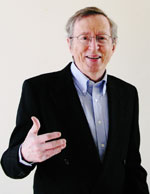 Steve Denning is the former program director of Knowledge Management at the World Bank. He now works with organizations in the U.S., Europe, Asia and Australia on knowledge management and organizational storytelling.
Steve Denning is the former program director of Knowledge Management at the World Bank. He now works with organizations in the U.S., Europe, Asia and Australia on knowledge management and organizational storytelling.
Steve is the author of several books on organizational storytelling, including:
- The Leader’s Guide to Storytelling: Mastering the Art and Discipline of Business Narrative (Jossey-Bass in April 2005).
- Squirrel Inc: A Fable of Leadership Through Storytelling (Jossey-Bass, 2004), a fable that elaborates seven different kinds of organizational storytelling
- The Springboard: How Storytelling Ignites Action in Knowledge-Era Organizations (Butterworth Heinemann, 2000), which describes how storytelling was used as a powerful tool for organizational change and knowledge management at the World Bank
Steve was born and educated in Sydney, Australia. He studied law and psychology at Sydney University and worked as a lawyer in Sydney for several years. He did a postgraduate degree in law at Oxford University in the U.K. before joining the World Bank, where held a number of positions from 1996 to 2000.
In 2000, Steve was named as one of the world’s “10 Most Admired Knowledge Leaders” (Teleos). In 2003, he was ranked as one of the world’s Top Two Hundred Business Gurus: Davenport & Prusak, “What’s The Big Idea?” (Harvard, 2003). In 2005, his book, The Leader’s Guide to Storytelling, was selected by the Innovation Book Club as one of the 12 most important books on innovation in the last few years.
Steve is a Senior Fellow at the James MacGregor Burns Leadership Academy at the University of Maryland.
If employees weren’t getting fired for what they are saying and doing on social media channels, your organization might simply pass on writing a social media policy, and this webinar. But they are, and a sound social media policy is a company’s first line of defense against risk in social media marketing. Which means you must embark on the delicate balancing act that is required to write or evolve your organization’s social media policy. If you policy is too complex or restrictive, you will scare employees and diminsh the significant business value that social media offers. And if you’re policy is too lax, or nonexistent, some of your employees may wind up as another social media horror story, fired for doing something they shouldn’t have. In this important webinar, our expert panel will share their experiences and advice on writing and enforcing a social media policy that does more good than harm. Attend and put your process ahead of policy.
“Gave me a lot to think about and actionable items for my organization.”
Learning Topics:
- Why your organization needs a social media policy
- What’s the best process to assure your policy is positive?
- What are the must-have elements of a social media policy?
- Do you need one policy, or many?
- What departments should be involved in policy creation and enforcement?
- What are some excellent policy writing resources you should review?
Presented by:
 Chris Boudreaux is SVP of Management Consulting for Converseon. He created SocialMediaGovernance.com to provide tools and resources for leaders and managers who want to get the most from their social media and social application investments. Chris leads teams of business and technology professionals to improve their Marketing, Sales and Customer Service capabilities, from strategy through execution. In the past, he led product development and business transformation initiatives at Fortune 100 companies and online start-ups, and I am a former Naval Officer.
Chris Boudreaux is SVP of Management Consulting for Converseon. He created SocialMediaGovernance.com to provide tools and resources for leaders and managers who want to get the most from their social media and social application investments. Chris leads teams of business and technology professionals to improve their Marketing, Sales and Customer Service capabilities, from strategy through execution. In the past, he led product development and business transformation initiatives at Fortune 100 companies and online start-ups, and I am a former Naval Officer.
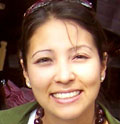 Jennifer Cisney, Chief Blogger and Social Media Manager, has been with Eastman Kodak for eleven years, resulting a broad knowledge of the various businesses and in depth experience with the corporate website, kodak.com. Her contributions to Kodak’s online experience have been inspirational photography, design expertise and creative content. She helped create and now manages the corporate blogs. After launching Kodak’s social media initiatives, she oversees Kodak’s presence on social media sites Facebook, YouTube, Twitter and Flickr.
Jennifer Cisney, Chief Blogger and Social Media Manager, has been with Eastman Kodak for eleven years, resulting a broad knowledge of the various businesses and in depth experience with the corporate website, kodak.com. Her contributions to Kodak’s online experience have been inspirational photography, design expertise and creative content. She helped create and now manages the corporate blogs. After launching Kodak’s social media initiatives, she oversees Kodak’s presence on social media sites Facebook, YouTube, Twitter and Flickr.
 Laurie Buczek is Platform Vision Team Manager & Social Media Strategistwithin Intel Corporation’s Digital Marketing organization. Prior to joining Digital Marketing, Laurie spent over two years as the Social Computing Program Manager where she was responsible for the major enterprise wide strategy & implementation of social computing for employees to connect & collaborate internally. Laurie began her social media journey three years ago while blazing a new trail for online marketing efforts by helping to launch & manage the first external social media community for Intel. Laurie’s work has been published and showcased across the industry. She is also a member of the 2.0 Adoption Council and Social Media Business Council. In addition to the experience within the social media space, Laurie has almost 18 years in high technology working in marketing, consulting and sales. In her life before Intel, Laurie worked for Forrester Research and Gateway, Inc.
Laurie Buczek is Platform Vision Team Manager & Social Media Strategistwithin Intel Corporation’s Digital Marketing organization. Prior to joining Digital Marketing, Laurie spent over two years as the Social Computing Program Manager where she was responsible for the major enterprise wide strategy & implementation of social computing for employees to connect & collaborate internally. Laurie began her social media journey three years ago while blazing a new trail for online marketing efforts by helping to launch & manage the first external social media community for Intel. Laurie’s work has been published and showcased across the industry. She is also a member of the 2.0 Adoption Council and Social Media Business Council. In addition to the experience within the social media space, Laurie has almost 18 years in high technology working in marketing, consulting and sales. In her life before Intel, Laurie worked for Forrester Research and Gateway, Inc.
Twitter, Facebook, blogs, wikis. A lot has changed on the web in recent years. So isn’t it time you revisited your organizations’ web site content strategy? An obsolete strategy can confound your audience and keep them away in droves. A successful content strategy, however, can be the spark that ignites your web site and helps you plan for and create compelling web content that rings true with your brand, aligns with your marketing plan, and keeps your target audience coming back for more. No small trick in a 140-character world.
What You Will Learn:
- Reasons why you need a web site content strategy
- Benefits of having a web content strategy that integrates with your marketing plan
- Key questions to ask to develop a successful web content strategy
- How to write web copy that is customer-centric, not sender-centric
- Top ten tips for writing concise and easy-to-scan web copy
- Tips for organizing content on a web page
Other Questions:
- What is a web content strategy and why do you need one?
- What process should you use to develop a web content strategy?
- How can you get customers and prospects to read your web copy?
- How can you determine if web content is good or bad?
- If your web content sucks, what’s the best way to fix it?
- How should you organize content on a web page?
Presented by:
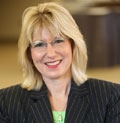 Barbara K. Mednick is an experienced and award-winning marketing communications and PR strategist, copywriter and trainer with more than 25 years of broad communications expertise. As president of BKM Consulting, Inc. in Minneapolis-St. Paul, Minn., she provides strategic marketing communications/PR consulting and planning, copywriting and training to a variety of clients including businesses, universities and nonprofit organizations. Prior to launching BKM Consulting in 1999, she held senior account management positions at several top Twin Cities PR and advertising agencies. During her career, she has garnered a number of industry awards for successful PR and marketing campaigns conducted for clients. She is a member of Minnesota Interactive Marketing Association (MIMA) and an active member of the Minnesota Chapter of the International Association of Business Communicators (IABC) – serving on the board of directors three times. She also serves on the board of directors for Minnesota Computers for Schools and the Ramsey County Workforce Investment Board. Barbara publishes a monthly e-newsletter for clients and colleagues along with a blog (www.bkminsights.blogspot.com), which focus on the intersection of marketing communications, public relations and social media marketing. Read Barbara’s complete bio.
Barbara K. Mednick is an experienced and award-winning marketing communications and PR strategist, copywriter and trainer with more than 25 years of broad communications expertise. As president of BKM Consulting, Inc. in Minneapolis-St. Paul, Minn., she provides strategic marketing communications/PR consulting and planning, copywriting and training to a variety of clients including businesses, universities and nonprofit organizations. Prior to launching BKM Consulting in 1999, she held senior account management positions at several top Twin Cities PR and advertising agencies. During her career, she has garnered a number of industry awards for successful PR and marketing campaigns conducted for clients. She is a member of Minnesota Interactive Marketing Association (MIMA) and an active member of the Minnesota Chapter of the International Association of Business Communicators (IABC) – serving on the board of directors three times. She also serves on the board of directors for Minnesota Computers for Schools and the Ramsey County Workforce Investment Board. Barbara publishes a monthly e-newsletter for clients and colleagues along with a blog (www.bkminsights.blogspot.com), which focus on the intersection of marketing communications, public relations and social media marketing. Read Barbara’s complete bio.
 Lisa Graham-Peterson, MA, ABC, is marketing communications director at CHS Inc., a Fortune 100 company and the largest farmer-owned agricultural cooperative in the U.S. Lisa integrates offline and online strategic programs to support the CHS brand and mission as a diverse grains, energy and foods company. Lisa is an accredited business communicator and active with a number of professional and community organizations. She has been a guest lecturer on integrated communications topics at the Carlson School of Management at the University of Minnesota, as well as St. Catherine University and Metropolitan State University, both in the St. Paul/Minneapolis area.
Lisa Graham-Peterson, MA, ABC, is marketing communications director at CHS Inc., a Fortune 100 company and the largest farmer-owned agricultural cooperative in the U.S. Lisa integrates offline and online strategic programs to support the CHS brand and mission as a diverse grains, energy and foods company. Lisa is an accredited business communicator and active with a number of professional and community organizations. She has been a guest lecturer on integrated communications topics at the Carlson School of Management at the University of Minnesota, as well as St. Catherine University and Metropolitan State University, both in the St. Paul/Minneapolis area.
Business professionals are called on frequently to write messages that attempt to get people to do things: to comply with a request, to accept ideas or to provide support. This often requires overcoming resistance, swaying the skeptics, winning over the “undecideds” or motivating the apathetic.
The ability to influence an audience is critical to business success, yet most people know little about the psychology of persuasion. It is not taught in high school, rarely in college, and almost never in an executive education program.
This session taps into the field of human behavior change and attitude modification. It looks at techniques you can use when you craft messages, for a written communication or for a speech, so that you influence the reader’s thought process and increase the likelihood that your reader or listener will agree. These techniques also will strengthen the writer/speaker’s credibility in the mind of the audience.
Aimed primarily at managers and executives, you’ll learn about gaining compliance and building your credibility through the use of principles of influence. The workshop focuses on crafting written and spoken messages in such a way as to alter the reader’s thought process.
Learning Topics:
- The importance of credibility
- What it really means to analyze your audience
- How to create a strong opening
- How to package your information for maximum impact
- Principles of attitude change: five ways to influence an audience
- Helping the audience remember: tips for making your ideas stand out
Instructor:
 Ken O’Quinn is a professional writing coach, who conducts workshops and one-on-one coaching in Fortune 500 companies and global public relations firms. He is the author of Perfect Phrases for Business Letters (McGraw-Hill, 2006).
Ken O’Quinn is a professional writing coach, who conducts workshops and one-on-one coaching in Fortune 500 companies and global public relations firms. He is the author of Perfect Phrases for Business Letters (McGraw-Hill, 2006).
He started Writing With Clarity in the mid-‘90s, following a 21-year journalism career, most of it with the Associated Press. He now works with companies such as Chevron, Campbell Soup, Visa, Intel, Eli Lilly, Raytheon, Reebok, Motorola and Sprint, and with PR firms such as Fleishman Hillard, Burson-Marsteller, Porter Novelli and Edelman. He also is a writing instructor for the National Investor Relations Institute.
Ken has been a guest speaker at the PRSA and IABC international conferences and at the American Press Institute. His writing has appeared in major U.S. newspapers and in such publications as the Harvard Management Communication Letter and the Employee Communication Management Journal.
Case Study: Version 2 Of Deloitte’s Intranet Collaboration And Knowledge Sharing
Deloitte, one of the largest professional services firms in the world, rolled out its internal portal, version 2.0, in December 2009. One of the largest NewsGator social media implementations in the marketplace, this session will showcase some of their results to help employees be more productive and collaborative through the portal.
Presented by:
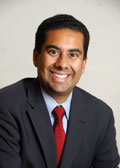 Arun Prasad is one of Deloitte’s leaders in Portal Solutions and has worked with a number of Fortune 100 and public organizations design, implement and evolve their web solutions. In his role he works with clients in a number of industries, builds marketplace points of view and methodologies for how best to implement and manage the expanding realm of web technologies.His recent work includes:
Arun Prasad is one of Deloitte’s leaders in Portal Solutions and has worked with a number of Fortune 100 and public organizations design, implement and evolve their web solutions. In his role he works with clients in a number of industries, builds marketplace points of view and methodologies for how best to implement and manage the expanding realm of web technologies.His recent work includes:
-
- Developing a Web 2.0 intranet strategy for a global software solutions vendor. This strategy includes the deployment and integration of collaboration tools and social media on a global scale.
- Implementing a portal platform for an insurance organization that supports employees and third-party sales resources effectively.
- Assessing the intranet needs of a financial services organization through multiple mergers and acquisitions.
Before joining Deloitte, Arun was co-founder of Castle Point Systems, a firm focused on web solutions consulting that built pioneering internet solutions using web technologies.
 Noreen Cohen-White is a Director in the Information Technology Services organization at Deloitte. She has held various leadership roles during her 14 year tenure with the US Firms and has solid experience in managing large, complex system implementation projects and enterprise application management. In her current role, she has responsibility for a broad portfolio of enterprise applications that support the US Communications, Knowledge Mgmt, Clients and Markets and Practice Protection operations for the US Firms.Noreen Cohen-White, Deloitte Consulting
Noreen Cohen-White is a Director in the Information Technology Services organization at Deloitte. She has held various leadership roles during her 14 year tenure with the US Firms and has solid experience in managing large, complex system implementation projects and enterprise application management. In her current role, she has responsibility for a broad portfolio of enterprise applications that support the US Communications, Knowledge Mgmt, Clients and Markets and Practice Protection operations for the US Firms.Noreen Cohen-White, Deloitte Consulting
Does your current intranet suffer from limited employee involvement orusefulness? Or just a plain lack of interest? Perhaps it’s time to hit the “reset” button and start from scratch. Using their own intranet site as a case study, the internal communications team at ESPN will show how a variety ofsocial/collaborative tools were incorporated to help build a dynamic and business-focused site.
Find out how:
- An intranet with engaging storytelling, combined with collaborative work tools, can strengthen internal communications.
- Involving employees throughout the relaunch process can help focus and expedite the roll-out plan.
- Employee-generated content can drive more traffic to a site and increase workforce engagement.
- Online video, podcasts and blogging can jump start business conversations between senior executives and employees.
Presenters:
 Alex Cortes is Senior Manager, Internal Communications at ESPN. He has been part of the ESPN Corporate Communications department since June 2000. In that time he’s worked in a variety of external PR roles, including viewer response & consumer relations, TV listings and network publicity, and content management of ESPN’s media website. In July 2008 Alex assumed his current position focused on internal communications.
Alex Cortes is Senior Manager, Internal Communications at ESPN. He has been part of the ESPN Corporate Communications department since June 2000. In that time he’s worked in a variety of external PR roles, including viewer response & consumer relations, TV listings and network publicity, and content management of ESPN’s media website. In July 2008 Alex assumed his current position focused on internal communications.
In his current role Alex works on various projects designed to promote and enhance the use of ESPN’s internal communication platforms (intranet, in-house TV network, campus radio, digital lobby displays, etc.), to strengthen collaboration and awareness across the organization. As senior manager, internal communications, he ensures that information reaches employees through a variety of sources and technology to serve the needs of the ESPN community.
Alex was graduated from Central Connecticut State University (CCSU) with a degree in Business Management & Organizational Behavior. He currently resides in Southington, CT.
 Abbie Bridges has been with the Walt Disney Company since August 2005. Prior to joining ESPN, she held a variety of internal communications positions supporting Walt Disney Parks & Resorts including, internal communications associate for Disney’s Animal Kingdom and Animal Programs and administrator of safety & healthy training and education.
Abbie Bridges has been with the Walt Disney Company since August 2005. Prior to joining ESPN, she held a variety of internal communications positions supporting Walt Disney Parks & Resorts including, internal communications associate for Disney’s Animal Kingdom and Animal Programs and administrator of safety & healthy training and education.
At ESPN, Abbie helps lead the company’s internal communication platforms including, intranet, in-house TV network, campus radio and digital display boards.
Abbie is a graduate of the University of Georgia and holds degrees in Advertising and Sociology.
CASE STUDY: USING INNOVATION TO BUILD A SOCIAL INTRANET
Intel has been dabbling internally with web 2.0 since 2004. Last year was spent deploying the first phases of a multi-phased approach to take the momentum and learning from the grass root efforts, and drive a globally deployed framework for social computing inside Intel. It is no small task, says Laurie Buczek, who is leading the team leveraging social media. “Not only do we have to evaluate and deploy solutions, but we also have to address Governance, Security Concerns, provide quantifiable ROI, capture use cases, and tackle transition change management one person and one team at a time.” This session will be a show and tell of an intranet that is making the transition from old-style to social, with lessons learned along the way.
Presented by:
 Laurie Buczek is a Social Media Strategist within Intel Corporation’s Digital Marketing organization. Prior to joining Digital Marketing, Laurie spent over two years as the Social Computing Program Manager where she was responsible for the major enterprise wide strategy & implementation of social computing for employees to connect & collaborate internally. Laurie began her social media journey three years ago while blazing a new trail for online marketing efforts by helping to launch & manage the first external social media community for Intel. Laurie’s work has been published and showcased across the industry. She is also a member of the 2.0 Adoption Council and Social Media Business Council. In addition to the experience within the social media space, Laurie has almost 18 years in high technology working in marketing, consulting and sales. In her life before Intel, Laurie worked for Forrester Research and Gateway, Inc.
Laurie Buczek is a Social Media Strategist within Intel Corporation’s Digital Marketing organization. Prior to joining Digital Marketing, Laurie spent over two years as the Social Computing Program Manager where she was responsible for the major enterprise wide strategy & implementation of social computing for employees to connect & collaborate internally. Laurie began her social media journey three years ago while blazing a new trail for online marketing efforts by helping to launch & manage the first external social media community for Intel. Laurie’s work has been published and showcased across the industry. She is also a member of the 2.0 Adoption Council and Social Media Business Council. In addition to the experience within the social media space, Laurie has almost 18 years in high technology working in marketing, consulting and sales. In her life before Intel, Laurie worked for Forrester Research and Gateway, Inc.
 David Murdico @DavidMurdico is the Executive Creative Director and Managing Partner ofSupercool Creative, a Los Angeles-based digital creative agency specializing in online video creative, production, viral, social media and integrated marketing initiatives for brands including T-Mobile, Pizza Hut, THQ, Atari and IBM.A graduate of The University of Southern California, David is also a contributing writer for media, marketing and advertising publication MediaPost as well as online video and internet marketing publication ReelSEO. David writes from experience, mixing up observations, postulations and humor for topics that include “Online Video and Social Media Marketing Advice for Marketing Executives,” “Online Video Marketing ROI: Five Ways To Make Sure You Won’t See One,” and “Chasing Dragons: The Case for Creating Original Video, Social, Interactive and Integrated Media Campaigns.”David’s background also includes commercial TV spot directing, TV comedy writing and commercial and TV art direction.
David Murdico @DavidMurdico is the Executive Creative Director and Managing Partner ofSupercool Creative, a Los Angeles-based digital creative agency specializing in online video creative, production, viral, social media and integrated marketing initiatives for brands including T-Mobile, Pizza Hut, THQ, Atari and IBM.A graduate of The University of Southern California, David is also a contributing writer for media, marketing and advertising publication MediaPost as well as online video and internet marketing publication ReelSEO. David writes from experience, mixing up observations, postulations and humor for topics that include “Online Video and Social Media Marketing Advice for Marketing Executives,” “Online Video Marketing ROI: Five Ways To Make Sure You Won’t See One,” and “Chasing Dragons: The Case for Creating Original Video, Social, Interactive and Integrated Media Campaigns.”David’s background also includes commercial TV spot directing, TV comedy writing and commercial and TV art direction.
 Adam Christensen Adam Christensen is responsible for the worldwide social media strategy and execution at IBM. In this role he directs the efforts of the global marketing and communications function in support of IBM’s strategy of enabling and activating IBM’s 400,000 employees as representatives of the brand. IBM has the largest employee population active in social media anywhere in the world.Prior to his current role, Adam held a number of positions within IBM communications and marketing. Before joining IBM, Adam worked at Brodeur Worldwide in New York City leading the firm’s financial services public relations practice. He’s also held related jobs at Novell, Inc. in Provo Utah, and Coltrin & Associates in New York City. Adam can be found on Twitter and his personal blog.
Adam Christensen Adam Christensen is responsible for the worldwide social media strategy and execution at IBM. In this role he directs the efforts of the global marketing and communications function in support of IBM’s strategy of enabling and activating IBM’s 400,000 employees as representatives of the brand. IBM has the largest employee population active in social media anywhere in the world.Prior to his current role, Adam held a number of positions within IBM communications and marketing. Before joining IBM, Adam worked at Brodeur Worldwide in New York City leading the firm’s financial services public relations practice. He’s also held related jobs at Novell, Inc. in Provo Utah, and Coltrin & Associates in New York City. Adam can be found on Twitter and his personal blog.
Communitelligence has a special affection for IBM’s world-renowned intranet, w3. We produced two Intranet Insider World Tours of w3 in 2006 and 2008 (still available). And so it was high time to revisit this amazing intranet that in 2011 received 252 million visits and 978 million views by roughly .5 million IBMers. And oh, how they use it, with 75,000 communities, 53,000 wikis and 21,000 blogs.
IBM’s w3 is now“social” on steriods. The long list of social tools now powering employee engagement, collaboration and innovation include:
- IBM Connections: Social software for business that includes blogs, wikis,
profiles, communities, bookmarks, files, and activity management
capabilities - SocialBlue, a purely social internal network
- Blue Pages, IBM’s employee directory with rich profiles
- BlogCentral, employee blogs
- Bluepedia, an online wiki that serves as a user-driven encyclopedia about IBM
- Jams, a platform for huge, tactically-focused online discussions
- TAP, a space for employees to test, share and promote innovative technologies
- The On Demand Community, a collaborative community based on IBM’s corporate citizenship program
- Expertise Locator, a service enabling real-time, contextual connection between IBMers.
But even more remarkable than the social business tools themselves is the way w3 has been continuously and organically improved by the good ideas of rank-and-file employees. That takes an open leadership and governance process that earns strong support by senior management.
If you want a glimpse of this amazing digital workplace, with practical takeaways for any intranet team, register for this exclusive, expert-guided tour. And invite your team to join you.
What You Will Learn:
- How and why the w3 intranet content strategy evolved from top down to employee-generated – and the valuable payoffs
- How to use social listening and analytics to drive requirements and enhancements
- How to use a wiki to write your company’s blogging and social media policies
- Why a culture of trust is crucial to a social intranet – and how to nurture it
- How to make sure top management “walks the talk” and models good digital workplace practices
- How to create a social business certification program for employees
Presented by:
Kieran Cannistra, Digital Content Strategist at IBM
 Kieran coordinates publication of news content on w3 (IBM’s Intranet home page), drives use of our primary publishing tool for this space (ECM) and drives the overall content strategy for w3. Kieran began her career within IBM as an instructional designer, working within the IBM Knowledge Factory. In 2008, she moved to CHQ and began writing and editing news for the home page, covering the CIO and Innovation & Technology beats. She took over the role of senior digital content strategist for the home page news portlet in 2011, and can honestly say she has the best job on the face of our planet.
Kieran coordinates publication of news content on w3 (IBM’s Intranet home page), drives use of our primary publishing tool for this space (ECM) and drives the overall content strategy for w3. Kieran began her career within IBM as an instructional designer, working within the IBM Knowledge Factory. In 2008, she moved to CHQ and began writing and editing news for the home page, covering the CIO and Innovation & Technology beats. She took over the role of senior digital content strategist for the home page news portlet in 2011, and can honestly say she has the best job on the face of our planet.
 Peter J. Ceplenski, Manager, User Experience Design, IBM
Peter J. Ceplenski, Manager, User Experience Design, IBM
Peter manages a multi-disciplinary user experience team tasked with managing the IBM Digital Design System and intranet and internet web properties. Peter began his career within IBM as an interaction designer and user research specialist working in a User-Centered Design consulting practice whose main mission was to support intranet solutions. He moved into the CIO’s office in 2004 and began managing the intranet user experience team. In 2011 he took on responsibility for both the intranet and internet user experience teams and together they redesigned and merged the internet and intranet design systems in support of IBM’s Centennial.
Who Should Purchase
This practical, information-packed learning opportunity is ideal for managers and professionals in internal communications, IT, HR, PR, content, web management, and anyone responsible for creating an enterprise 2.0 social intranet to encourage employee collaboration and innovation.
There’s a new social media world order and its tentacles are reaching inside organizations.
Employees expect to connect and have conversations with coworkers as easily as they do with old high school chums on Facebook. Meanwhile, corporate communication, HR, IT and leadership are struggling with how to unleash social tools in a way that amps up communication, collaboration and employee engagement.
Dan Pontefract, head of Learning & Collaboration at TELUS, believes strongly that traditional management styles are obsolete and that organizations need to adopt a collaborative, open leadership approach, one that engages and empowers all employees. This inevitably means social software.
In this webinar, you will learn from someone who’s paving a trail through this new terrain. Pontefract, author of the new book, Flat Army, will give us a tour of the TELUS intranet and tell how he has driven a philosophical and cultural shift in the way TELUS communicates, collaborates and learns.
What You Will Learn:
- The importance of social tools to an organization’s culture, leadership programs and learning model
- How leaders can provide context, content and a vehicle for conversation through social tools
- Specific examples of social tools in leadership action
Who Should Attend
Social business is a team sport. Business leaders from many disciplines have a role to play and should attend this webinar, preferably as a group:
- internal communications, HR , learning, marketing, corporate communications, public relations, customer service, legal and media relations.
Presented by:
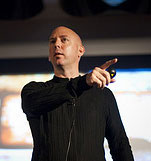 Dan Pontefract is a passionate leader in social business, Enterprise 2.0, learning, leadership and collaboration. He is author of Flat Army: Creating a Connected and Engaged Organization.
Dan Pontefract is a passionate leader in social business, Enterprise 2.0, learning, leadership and collaboration. He is author of Flat Army: Creating a Connected and Engaged Organization.
As head of Learning & Collaboration atTELUS, Dan championed the introduction of the TELUS Leadership Philosophy (TLP), an open and collaborative-based leadership framework for all 40,000+ TELUS team members. He further championed the use and deployment of collaborative technologies to complement both the learning and leadership frameworks. In 2010, Pontefract was acknowledged as a Vanguard Award winner and is a two-time winner of the Corporate University “Best in Class Awards” for the Leader of the Year. In 2012, SkillSoft awarded him the “Learning Leader of the Year” for his work at TELUS. Pontefract holds a Masters of Business Administration, a Bachelor’s of Education, and multiple industry certifications and accreditations. His first book, Flat Army: Creating a Connected and Engaged Organization publishes in March, 2013.
This session is based on findings from the 3rd annual Global Intranet Strategies Survey conducted in the second part of 2008 with 226 enterprises around the world. 22% of the participants said the intranet was “the way of working” in their organisations. This doubled from 11% in the previous year.
How are these intranets different in terms of role, strategy, content & services and management?
This session will give you ideas for your own intranet action plans, and facts & figures you can use in your intranet business cases.
What You Will Learn:
- How leading intranets are positioned and perceived within their organisations.
- How governance is defined: strategy documents, steering committees, decision-making.
- Content strategies, collaboration and the integration of social media.
- The future role of “intranet managers” within their organisations.
- The hottest topics and real concerns in 2009
- And much more
Presented by:
 Jane McConnell is an intranet and portal strategy specialist. She founded NetStrategy/JMC in 2001 and works primarily with companies and organisations with complex intranets and challenges. McConnell’s expertise is the following areas: positioning and strategy roadmaps for intranets and portals, governance and intranet management issues, customisation strategies as well as how social media concepts applied internally can bring value to organisations. More information about services and references can be found on http://www.netjmc.com.
Jane McConnell is an intranet and portal strategy specialist. She founded NetStrategy/JMC in 2001 and works primarily with companies and organisations with complex intranets and challenges. McConnell’s expertise is the following areas: positioning and strategy roadmaps for intranets and portals, governance and intranet management issues, customisation strategies as well as how social media concepts applied internally can bring value to organisations. More information about services and references can be found on http://www.netjmc.com.
McConnell initiated the Annual Global Intranet Strategies Survey in 2006, and publishes the annual results each October in the Global Intranet Trends Report. In 2008, 226 organisations around the world participated. She writes the column “International Intranets” for the magazine “Intranets: Enterprise Strategies and Solutions” (Information Today). She is co-author of “L’avantage internet pour l’entreprise”, the first marketing and communication-based internet business book for senior executives in France (Dunod,1996), and contributing author to “L’intranet dans tous ses etats” – (IQ Collectif, 2004).
She publishes regularly on the blog “Globally Local & Locally Global”. She can be found at netjmc on Twitter and started up the Twitter group “Intranetwatch” in 2008. Based in the south of France, McConnell has a working base in Paris and travels to client locations primarily in Europe and North America.
“It was good to hear that independent research confirms the direction we’re taking with our intranet and some of the processes we’ve already put in place.”
Practical techniques any manager can use to motivate new behaviors and deliver better business results
Why are managers employees’ preferred source of communication? Because employees crave information that affects their day-to-day lives – information that only their managers can provide. Andy Szpekman, president of AHS Communications, outlines what managers can do to meet employee expectations, become better communicators and be more successful managers.
You’ll learn the four competencies every manager needs, the type of communication employees demand, and proven ways to change people’s attitudes and behaviors. You’ll leave the session with a solid understanding of what separates outstanding managers from the rest, as well as useful tips and simple tools any manager can apply immediately on the job. Whether you manage others or advise those who do, this teleseminar will help you engage your organization’s employees to deliver their best work.
Learning Topics:
- Six things every manager needs to do well
- What to look for when gathering employee feedback
- How to deliver a tough message effectively
- Stupid ideas about communication
- How to convey information, field challenges and brainstorm solutions – in under 15 minutes
Andy answers real-world questions on:
- Companies that are doing a good job at training their managers to be better communicators
- How to effectively measure whether a manager is communicating well
- advice and techniques to help managers be more open and forthright in their communications, even when they may fear repercussions from their management
- Specific advice for how to handle situations in non-public organizations, where laws prevent communications to be less timely than we would like it to be
- How to focus on listening rather than figuring out what you’re going to say when the other person stops talking
- the “huddle technique” to brainstorm solutions right after the change or problem has been communicated to employees
- The 360-degree survey technique to assess the effectiveness of manager communications
- The wisdom of setting up regular employee communication time
Who should purchase:
-
Line managers
-
Functional managers
-
Internal communicators
-
Corporate communicators
-
HR managers
-
Change managers
-
Internal marketers
-
College/university libraries and bookstores
Instructor:
 Andy Szpekman provides HR and communication research, strategies and tools to improve business performance. His clients include Bank of America, BC Hydro, Cardinal Health, McKinsey & Co., Microsoft, News Corporation, Scholastic and Wachovia.
Andy Szpekman provides HR and communication research, strategies and tools to improve business performance. His clients include Bank of America, BC Hydro, Cardinal Health, McKinsey & Co., Microsoft, News Corporation, Scholastic and Wachovia.
Earlier in his career, he led HR communication at Bank of America, served as communications manager for a global division of Warner-Lambert, and was a senior HR and communication consultant with Brecker & Merryman, Inc.
Andy is active in the Council of Communication Management and a former officer of the Metropolitan New York Association of Applied Psychology. His work has been featured in national news and business publications and leading trade journals. He holds a B.A. in psychology from William Paterson University and an M.A. in organizational psychology from Columbia University.

